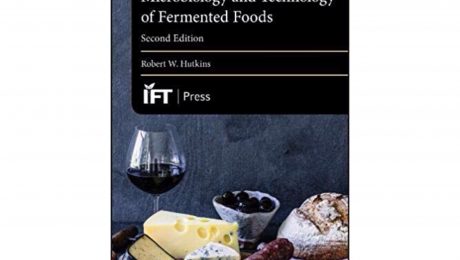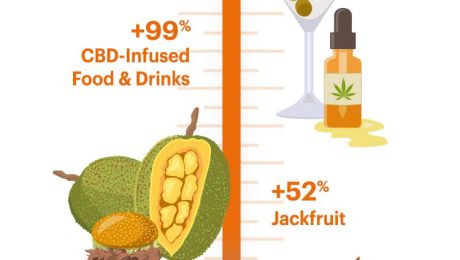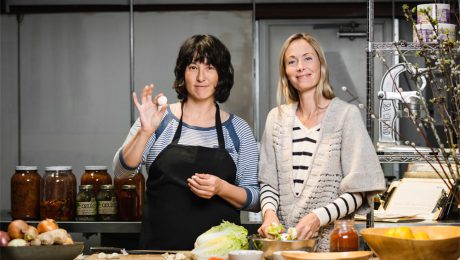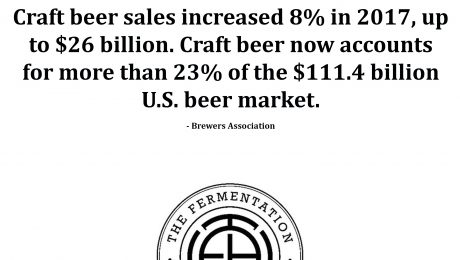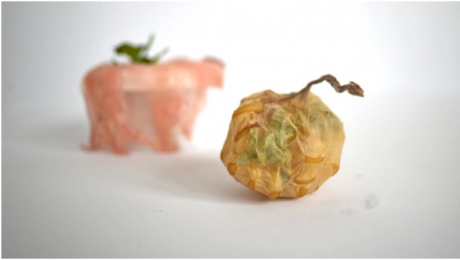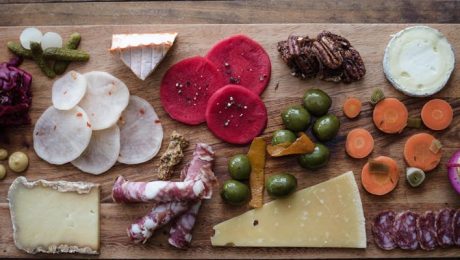Meeting Growing Demands for Fermentation Expertise, Classic Fermentation Textbook Gets New Edition
“To meet the growing demand for fermentation expertise within the food industry,” an updated edition of the textbook “Microbiology and Fermentation of Foods“ has been released by author Dr. Robert Hutkins, a professor at the University of Nebraska-Lincoln and member of the International Scientific Association for Probiotics and Prebiotics. The book was first released in 2006 during a time Hutkins said fermentation was considered an old science, “with nothing new to be learned.” There were few universities offering specific fermentation programs. But recent microbiological advancements — and growing consumer interest in fermented foods — means more people are seeking fermentation expertise. The new edition includes chapters in distilled spirits, cocoa, coffee and cereal products. Hutkins notes scientists across multiple fields are studying fermentation today, from nutritionists to biochemists to archaeobiologists.
Read more (International Scientific Association for Probiotics and Prebiotics)
- Published in Science
9 Emerging Food Trends from Expo West
We’re at Natural Products Expo West this week, checking out the innovations in the natural food industry and learning about the future of food. Here are nine trends from Expo West:
1. Sugar Vilified. Natural products are axing white sugar, using low- or no-calorie sweeteners like stevia and monk fruit.
2. Healthy Fats. The fat-free era is gone; today’s products include full-fat ingredients, like ghee and avocado oil.
3. Eat More Plants. Natural brands ate using more plant-based products with fruits and vegetables instead of meat.
4. Healthy Microbiome. Gut health is big, and natural products are focusing on probiotics and prebiotics.
5. Endocannabinoid System. Brands are experimenting with CBD, hemp and the encocannabinoid system.
6. Nutrition Meets Convenience. Products are adding extra nutritional value – and focusing on grab-and-go convenience.
7. Responsible Sourcing. Transparency is vital to consumers, and brands are sourcing quality ingredients and trade relationships.
8. Responsible Packaging. Single-use plastic packaging is out; products today are put in reusable and compostable packaging.
9. Updating Stale Categories. The pantry is getting an overhaul with better ingredients for classic items.
Read more (New Hope Network)
- Published in Business
Q&A with Katherine Harmon Courage, Author of “Cultured: How Ancient Foods Can Feed Our Microbiome”
When Katherine Harmon Courage began investigating the microbiome 10 years ago as a writer for Scientific American, gut health was barely a blip on the public’s radar. It’s hard to believe today. You can’t walk by a grocery store shelf without reading dozens of labels advertising probiotic health benefits.
Today, gut health is at the forefront of the food industry. The probiotics supplement market is estimated to grow at a CAGR of 9.7 percent in the next seven years. And the market for probiotic-rich fermented foods is expected to grow at a CAGR of 4.98 percent in the next five years.
Gut health research from scientists and dieticians surged in the past decade. Courage was fascinated. “Looking at the food around the world and the connection between our ancient diet and microbes, that is really, really exciting,” she says. Courage spent a year travelling the world, exploring the traditional, gut-friendly cuisine of different cultures. She paired her culinary investigation with modern science into an engaging book: “Cultured: How Ancient Foods Can Feed Our Microbiome.”
Below, highlights from a Q&A with Courage on her new book, and her findings on the fermentation industry’s role in American’s evolving diets.
Q: You have been covering the microbiome since 2009. How has the scientific research progressed?
When I started covering it, there were small studies here and there, a lot from the Human Microbiome Project. Researchers were taking a census at the time, that we share our body with trillions of organisms. It was this niche area that I found super fascinating, but no one was talking about it much.
In the past decade, so much has changed. Science has evolved so much to learn about the connection between our health and our microbiome. We were raised to think germs are bad, bugs are bad, but we live with these commensal organisms.
Q: The food industry is taking notice of this research. What do you think of so many food products marketed with a gut health focus?
Talking to researchers, it’s interesting to see their perspective as scientists. They see the extreme of people thinking probiotics and microbes that are a marketing ploy to other people thinking probiotics and microbes will cure every health issue under the sun.
Microbiologists look at this critically. We’ve seen positive impacts on our health from it, but it won’t solve everything. We’re just at the beginning of understanding this relationship between these amazing and delicious fermented foods and our health.
Q: What’s the biggest misconception about microbes and our microbiome?
One of the misconceptions — and the one I had when I was thinking about this book — was the notion that if we eat something labeled probiotic, like a cup of yogurt, that we’re reinoculating our gut and restoring our gut health. Like if we eat a cup of yogurt, we’re good to go.
These microbes that we eat don’t stick around permanently. They’re just along for the ride. Weeks after we consume these, they’re not there anymore. When I learned this, I thought “There goes my research.” But when I looked into it more, in traditional culture and cuisines, people are eating fermented foods all the time, every day. It’s not about that one special food you eat or that one magic pill. It’s having those foods part of your daily cuisine and part of your life.
It’s great for fermentation producers. You don’t eat one jar of kimchi and call it good — you need to keep integrating it into your diet.
Q: Can a pill really fix our gut health?
Not being a scientist, I can’t say if it will or won’t fix our gut health. But talking to microbiologists who study this, it really is about exposing our bodies to these bacteria. We live our lives in such clean and pasteurized lives that we don’t get that microbial exposure. Their perspective is eating as many bugs, exposing ourselves to as many bugs, it will have a positive impact on our immune system as long as we’re healthy. A lot of the probiotic pills have been studied and they have positive health correlations, but we’re still learning so much about it.
Eating fermented foods, especially wild fermented foods, can be even more beneficial. Microbiologists and researchers in this field are really just starting to see what microbes are beneficial to our health. We can expose our bodies to more microbes through wild fermented foods because they’re so much more complex and have so many more microbes, rather than a yogurt with just three different microbes in it. We’re getting so much exposure through wild fermented foods.
Q: Why is it bad if we don’t properly feed our microbiome?
There’s the old friends hypothesis which is similar to the hygiene hypothesis. Our bodies have evolved to expect microbial exposure. But now our immune systems have gotten on this overactive trajectory, attacking these things they don’t need to.
We need to remember our native gut microbes, to feed them the nutrients they need to thrive. When we don’t feed our native microbes the fiber they need to thrive, they’ll eat the mucus lining in our gut, leading to more inflammation and asthma. We need to eat more microbes and feed the native microbes we do have.
Q: Can our native microbes change if we don’t feed them?
There’s been some interesting research out of Stanford’s Sonnenburg Lab. Mice fed on a diet with less fiber tend to have decreased microbiomes. Over generations, as the mice have pups, they pass that microbiome on to their pups. Generations later, these pups have super impoverished microbiomes. And they can’t come back and have a healthy microbiome by feeding them more fiber.
Q: Fermented foods are making waves in the food industry as the next big superfood. Tell me about fermented food in the book?
For the book, I got tor travel all over and explore these different cultures that have different fermented food traditions. I picked four main food places with quintessential fermented food — Greece to research yogurt, Korea to research kimchi, Japan to research miso and Switzerland to research cheese.
One of the cool discoveries I made travelling to these places was I discovered other aspects of the local diet that nourish the microbiome, other fermented foods and whole foods. These countries have different ways of thinking about eating than we do in America.
Q: What was the most eye-opening aspect of exploring other culture’s cuisine?
There were a couple. One, touring one of the big food markets in Seoul, Korea. Kimchi is their national food, but I was shown all these different fermented foods, different sauces, fermented soybean paste similar to miso, fermented veggies. It permeates their culture. Looking from far away in American grocery stores and farmers markets, you wouldn’t see it.
Second, in Japan, speaking with another author, we were talking about nato. Some people find nato challenging because it’s made with basic fermentation rather than acidic fermentation. The Japanese approach to fermented food, they teach at a very young age that “This is a wonderful, healthy food.” In America, we teach food as “Try this because it’s gratifying and yummy.” There’s this dichotomy of healthy foods versus gratifying goods. In Japan, there’s more of an understanding that there’s a wide variety of foods and you’re expected to eat all of them because that’s how you have a healthy life.
Q: Do you think this surge of fermented foods is a trend will disappear or a new food movement here to stay?
It’s here to stay. I expect to see it expanding and incorporating into more people’s lives. There is really compelling research with the health benefits, but there’s also these amazing flavors for those of us who weren’t raised with it. Like kimchi. Once you eat kimchi, food seems bland and lacking without it. Koreans describe it as “You need kimchi with every meal.” They can’t imagine eating it without. The flavor and texture experience is a big part of eating. We shouldn’t be forcing it down for our health, but truly enjoying it.
Q: Ancient foods are making an appearance in our diet again. Tell me what you found most fascinating in your research for this book on ancient foods.
One of the interesting things was how they are being incorporated into contemporary culture and cuisine. I went to a fermentation based restaurant in Tokyo, and I talked to the chef about how he’s integrating more traditional practices into contemporary cuisine and making very elegant meals out of them.
Q: Tell me more about your travels to Greece to learn about traditional yogurt. Modern yogurt is often criticized for the scientifically added probiotics. What did you find about traditional yogurt?
My image of yogurt was this fermented product with a few strains. But I wondered, with fermented yogurt products, are they just dumping strains in after they produced it?
Touring a family-owned, small-scale yogurt making facility in Greece, it was interesting seeing their process. They use backslopping, which is using part of the previous batch to inoculate the next batch. Traditionally, that was the way all of these products were made. It makes a richer microbial environment. We don’t know what strains are in it unless it’s sent off to a lab. Their strains come from the batch before and the batch before. Their yogurt would have strains unique to that product since they’ve made it for decades in that same place.
Q: Can better gut health help Americans notoriously destructive eating habits?
I think one of the keys is getting more fiber, especially prebiotic fiber from whole foods, not just a supplement, to really nourish a diverse gut microbiome. And, of course, eating more fermented foods.
For more information on Katherine Harmon Courage, visit her webpage. To purchase “Cultured,” visit Amazon.
- Published in Food & Flavor, Health, Science
WSJ Dubs 2018 “The Year of Fancy Water & Kombucha”
Wall Street Journal called 2018 “The Year of Fancy Water and Kombucha.” Beverages were one of few climbing categories in low supermarket sales. Drinks, according to Nielson, “must now be purpose-fulfilling, light and fizzy.” Kombucha sales rose a huge 43% in 2018 for $400 million in sales. Sparkling water and “value-added water” (beverages with vitamins and electrolytes) rose 17.5% in 2018 for an impressive $2 billion in sales.
Read more (Wall Street Journal)
- Published in Business, Food & Flavor
More U.S. Consumers Eating at Home vs Restaurant
More consumers are eating at home, a food industry movement that has remained unchanged for nearly 10 years. Today, 82 percent of American meals are home cooked, according to research by the NPD group. Restaurant sales are in their worst slump since the Great Recession. Today’s diners eat out 185 times a year now, compared to its peak in 2000 at 216 times a year.
Numerous factors are kindling the drop.
- High cost of restaurant meals. Eating out is expense — restaurant meals are almost three times as expensive as a home-cooked meal. And the cost for a restaurant meal is likely to increase as the minimum wage across the country increases.
- Convenience of streaming from home. Diners would rather eat in their own space watching a favorite show rather than eating in a public space with strangers.
- Comfortable home surroundings. Diners are practicing “Hygge,” the Danish art of coziness. Americans want to stay in their house “to find comfort and shelter from the maddening crowd,” the study notes.
- More people work at home. The American workforce is increasingly based at a home office, dropping the amount of workers who grab a bite to eat at a nearby restaurant on their lunch break.
- Healthy food is trending. Clean and healthy lifestyles are topping food prediction lists, like vegetarian meals, vegan milk and probiotic-packed everything.
- Popularity of pre-made meals. Meal kits continue to dominate the market, generating $1 billion in revenue worldwide in 2015. Predictions show meal kits will hit $10 billion by 2020.
- Ease of online grocery delivery. Fast, home grocery services are available nationwide now, with some retailers offering same-day delivery.
- Consumers changing preferences. New generations of diners prefer cooking at home more than their elders. And if they’re going out to eat, they prefer fast casual over a sit-down restaurant, another change from their parent’s generation.
This creates more opportunities for food companies, though. Today’s home cooks are itching for unique, healthy food — a niche fermented product fills. Here are five ways fermented food producers can capitalize on the growing eat-at-home trend:
1. Advertise Quality and Health Benefits
Health and wellness are leading the food industry — natural, organic, whole, gluten-free, preservative-free, sugar-free and clean are all buzzwords visible on labels at grocery store shelves. According to a Forbes article, this healthy eating trend is not slowing down. Eighty-eight percent of consumers say they’d be willing to pay more for healthier foods.
Fermented food producers must actively promote the health benefits of fermentation. Consumers are craving the probiotic-packed, nutrient-dense ingredients in fermented foods. Advertising a product’s health impacts will attract consumers.
2. Partner with Meal Delivery Service or Ready-to-Eat Meal Producer
According to Nielsen data: “ While the food retail landscape isn’t one that sees an over-abundance of frequent, market-shifting innovation, meal kits are proving to be just that. In just a few short years in fact, they have carved out a unique — and profitable — niche in the U.S. grocery landscape.”
About 9 nine percent of Americans purchased a meal kit in the last six months, totalling 10.5 million households. And 25 percent say they would consider buying a meal kit in the next six months, totalling more than 30 million households.
Fermented food producers who get their products into ready-to-eat meal kits will see big returns. David Portalatin, NPD food industry advisor and author of “Eating Patterns in America,” says: “We don’t look for this trend to change anytime soon and operators and foodservice manufacturers can take advantage of the stay-at-home movement by offering at-home eaters with innovative ready-to-eat meal solutions and a greater degree of convenience.”
3. Post Recipes Online
Don’t tell consumers why your product is so great — show them. Post recipes and an accompanying enticing finished meal picture on your website regularly. These recipes should feature your food product as a key ingredient. The internet is a powerful tool for promoting food — “food” was the second most searched category on the internet. Consumers are looking on the internet for recipes rather than relying on family favorites. A study found 40 percent of consumers learn about food via websites, apps or blogs, and half use social media sites to find recipes.
4. Share Quality Product Pictures or gastroporn
In the food industry, presentation is everything. Sharing a quick, blurry photo snapped in poor lighting will not appeal to consumers. Use “food porn” tactics. The term (meaning a glamourized image of food) is changing food advertising. A study found the most attention-grabbing shots feature:
- Moving food. A picture of a glass of orange juice being poured is more appealing than a picture of a static glass of orange juice. This is because, to viewers, it implies freshness. “Protein in motion” is another term used to capture successful food photography, like oozing egg yolk, melting cheese and steaming meat.
- First-person perspective. Feature food as if the viewer can pick it off their screen and eat it rather than a picture from a third-person perspective of someone else eating the dish. Adding a spoon approaching from the right, for example, results in a consumer being 15 percent more willing to buy the product than if the spoon approaches from the left.
- Healthy food. The food porn movement is famously dominated by unhealty eats, like pizza and desserts. But a study by university researchers called “Fetishizing Food in the Digital Age” found that healthy food garners more “likes” than unhealthy food.
- Market to Right Audience
The population segment most often eating at home: families and groups of five or more people. Single adults with incomes above $100,000 drive restaurant sales. It’s no major surprise — it’s much cheaper for one person to eat out than a family — but should be noted in marketing plans. Cooking at home is still synonymous with cooking for a group.
Photo from: Foodies Feed
- Published in Business
Menu Trends: Fermented Foods up 149% in Restaurants
Fermented foods are up 149% in restaurant, the biggest food trend of 2018. In 2019, restaurants should expect customers to be seeking probiotic, fermented foods all year long advises Upserve, the restaurant management company. The funkier, the better. Traditional fermented food like sauerkraut actually saw an 18% decline in restaurants. Americans are craving more adventure on their plate, so kombucha and kimchi are selling well. Also a growing trend: plant-based items.
Read more (Upserve Restaurant Insider)
- Published in Business
Ozukè Founder: Fermentation Will Change Diet & Planet
Blending ancestral kitchen traditions and new scientific research will allow fermentation to change our diet — and our planet.
In a TEDx Talk, Mara King, co-founder of fermented food store Ozukè, shares why she is proudly releasing trillions of good bacteria into the population. Her food philosophy rubs against everything the Food and Drug Administration and state health departments practice. While government agencies enforce strict sanitation standards in the name of protecting American’s food, King preaches that it’s wiping out good bacteria and dumping more toxins into the environment.
When King and co-founder Willow King (no relation) opened their Colorado-based food business, a food scientist from the Denver office of the Health & Human Services Department performed a safety inspection. The food expert was confused by Ozukè’s live, fermented pickles, sauerkraut and kimchi. King: “He said ‘Your product is so weird. We follow all these FDA guidelines in food manufacturing in order to diminish bacteria and here you are making it on purpose.’”
“The food we make is actually super, super, super safe, unlike mots processed packaged fresh foods,” King says. “The reason this food is so safe is not because I’m better at this antimicrobial Macarena than anybody else. It’s because the bacteria are doing the work of making the fermented foods pretty much bomb proof.”
Though numerous cultures have been fermenting for generations (“It’s how humans have been eating raw, crunchy vegetables all through hard winters.”), King notes it’s only in the last 10 years that scientists have been able to map the complex fermentation process. By letting bacteria thrive in its own ecosystem, it “creates a food that’s no longer harmful to humans” and makes a more nutritious product.
“Nature does not operate in a vacuum and neither should we,” King says. “We need to understand the complexity of the world in which we live, then we can start to come up with solutions that do honor our heritage.”
King, who great up in Hong Kong, says older Chinese women store an impressive knowledge of food and medicine. Merging ancient tradition with new science is what will create the living solutions needed to continue living on our planet.
“In fermentation, we have a little trick that we use which is called using a started culture or a mother. I believe that our starter culture…is our human cultural history,” King says. “Once we start tapping this information…we’ll start to come up with amazing solutions, solutions that grow, solutions that rot, solutions that breath.”
Today Ozuke (which means “the best pickled things” in Japanese) still makes pickled veggies, but also teaches fermentation workshops. For more information, visit their webpage.
- Published in Food & Flavor, Health
Craft Beer Sales Up 8% or $26 Billion
Craft beer sales increased 8% in 2017, up to $26 billion. Craft beer now accounts for more than 23% of the $111.4 billion U.S. beer market. – Brewers Association
- Published in Business
Student Creates Scoby Food Packaging; Fermentation Growth Just Two Weeks
Today’s food is packaged in so much plastic that humans now regularly consume plastic molecules in their food. A Polish design student created Scoby packaging, an edible and recyclable packaging that farmers can grow to wrap products. The zero waste biological tissue is a similar texture to animal tissue used to encapsulate sausage or salami, but Scoby is vegetarian and can be grown with a simple chemical process student Roza Janusz of the School of Form in Poznan, Poland invented. The process is similar to making kombucha, and the fermentation growth time per sheet is two weeks.
Read more (Fast Company)
- Published in Science
GYST – Fermented Food & Drink Bar – Researching Health Benefits of Lacto-Fermented Foods
Fermented food and drink bar GYST is expanding locations, workshops — and research. The Minneapolis-based company is teaming up with University of Minnesota Food Science and Nutrition Department to study the health benefits of a consistent diet of lacto-fermented foods. GYST will study topics like: will the health of soil produce better fermented foods, does organic produce create better fermentation and do different vegetables produce different bacteria.
Read more (City Pages)

